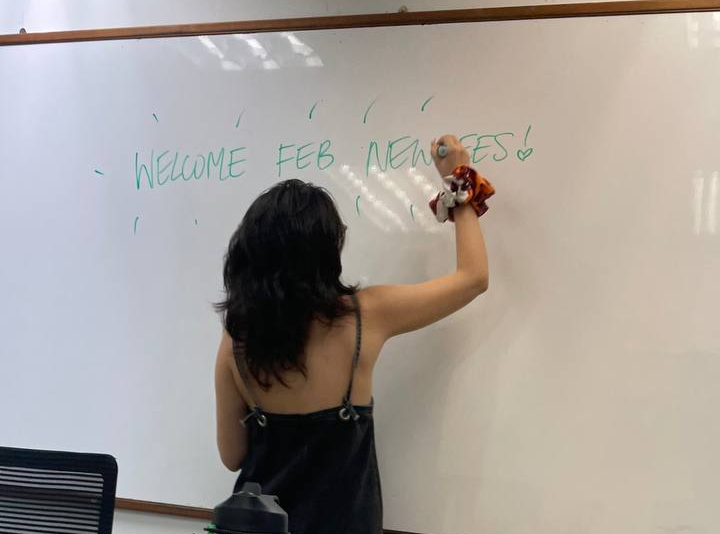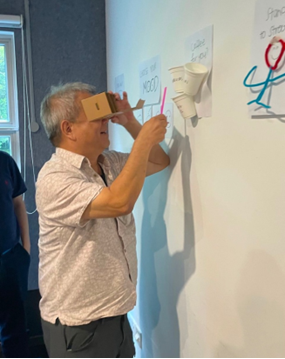Facilitation is an indispensable skill for UX designers. Whether you're facilitating stakeholder alignment, public workshops, or other collaborative sessions, the ability to effectively guide and engage participants is crucial. As someone who once grappled with the daunting question of "Where do I even begin?" I've picked up several valuable tips during my journey, and I hope they prove as beneficial to you as they have been for me.
1. Mine your confidence from unexpected sources
Finding your unique facilitation style can be tough, especially when you're just starting out. It takes time to cultivate & hone your own approach and feel truly confident in your role. But here's a hack: your confidence can be discovered by mining it from other areas of your life where you already possess confidence. For instance, I feel most confident when performing and singing, which also happen to be my hobbies.
So when I facilitate, I try to consciously channel that persona, drawing upon the same energy. So, consider your own sources of confidence, whether it's being a parent, pursuing hobbies, or engaging in any other activity where you feel in your element.
2. Set the stage for comfort
Making people feel comfortable is key. Your goal is to shift the focus from yourself to the needs of your participants — it's crucial that everyone feels physically and mentally at ease. Here's a handy checklist to ensure a welcoming environment:
- Establish the comfortable tone: Create a welcoming atmosphere with a warm smile. You can also welcome the participants with a cheerful welcome message on the screen/whiteboard as they enter the room.
- Snacks and sips: Don't forget the power of refreshments! Offer drinks and snacks to keep everyone fuelled and in good spirits.
- Timely bathroom breaks: No explanation needed; we’ve all been there. Every 1.5 - 2 hours, paired with a tea or coffee break, is your best bet.
- Remember names: Take the time to learn and use participants' names—it goes a long way in making them feel noticed and valued. Or better yet, provide name cards for a quick and easy introduction.
- Embrace every answer: Foster a safe space where there are no bad answers. Encourage and affirm participants' contributions, creating an environment of trust and openness.
- A groovy playlist: Curate a playlist that sets the right mood—energetic, yet not overpowering. (You can't go wrong with some relaxing lo-fi beats.)
- Make the space work: Don't be afraid to mix it up! Shift desks and chairs to create an environment that encourages collaboration and engagement.
- Balance the conversation: Ensure everyone gets a fair chance to contribute. Employ strategies like turn-taking protocols or gently redirecting the conversation.

Our UX Designer greeting our February ‘Newbees’ with a friendly message on the whiteboard at the start of our Design Onboarding session, conducted for every new batch of Palowans.
3. Keep the objective at the forefront and provide recaps
While workshops can be enjoyable and fun, their true value lies in ensuring participants leave with the intended takeaways and a strong, memorable message. To achieve this, clearly state the purpose and expected outcomes from the start. As workshop progresses, especially the longer ones, remember to provide recaps at the end of each checkpoint.
Just like how TV shows have "previously on..." segments to jog the audiences’ memories or bring new viewers up to speed, injecting lines like "Let's recap what we’ve discussed so far..." not only reinforces important points but also keeps participants engaged and dialled into the overall narrative.
4. Uphold Neutrality as much as possible
At a training I once attended, I was really impacted by the emphasis placed on the art of staying neutral. But what does being ‘neutral’ truly mean in this context? In essence, it’s about leaving your personal preferences at the door. You want to make sure you’re not playing favourites or making anyone feel like their contribution is more or less valued than anyone else’s.
I recall instances where I’d use to say “That’s a great point”, but then came to realise that this might unintentionally sideline others. Now, I pivot to neutral comments like “Thank you for sharing.” And if someone is looking for expert advice, turn it around and ask the group, “What do the rest think?” Your job isn’t to offer all the answers, but to create a space for the conversation for the participants to reach that point themselves.
5. (A bonus!) Engage with physical artefacts
There’s always something magical about involving the participants' hands to build something, anything. Consider providing tangible items, such as paper prototypes, craft materials, or even LEGO blocks, that people can interact with and use to bring their ideas to life. This also helps to better communicate their perspective and experiences, where ideas can be visually and tangibly shared among team members.
I once had the privilege of witnessing senior participants rediscover their inner child as they meticulously crafted paper cut-outs into landscapes and styrofoam balls into whimsical characters. Don’t underestimate the power of tactile engagement!

A participant tests his paper prototype during an AR/VR Design Thinking workshop, facilitated by our team and hosted by IMDA.